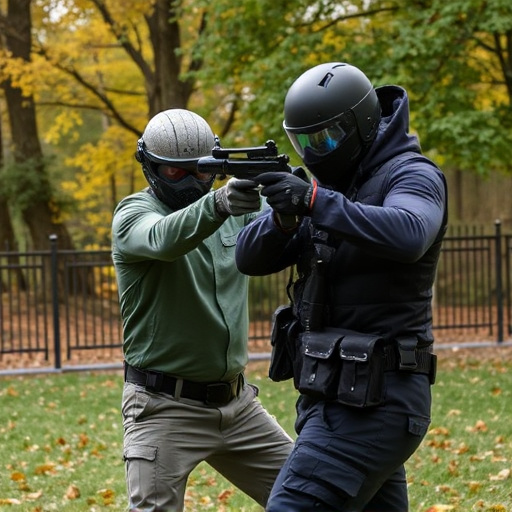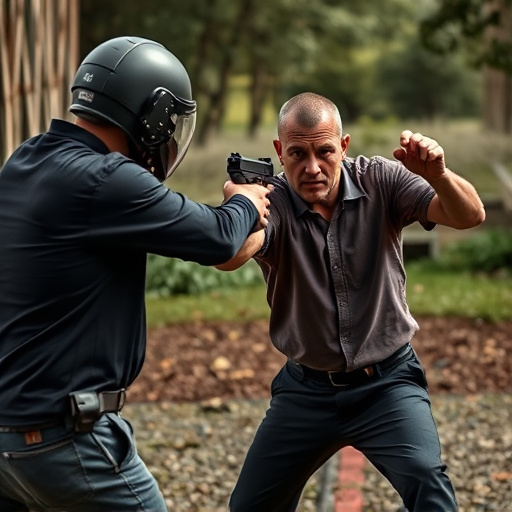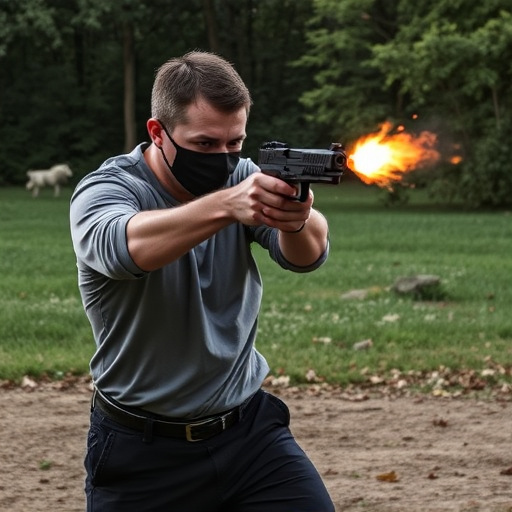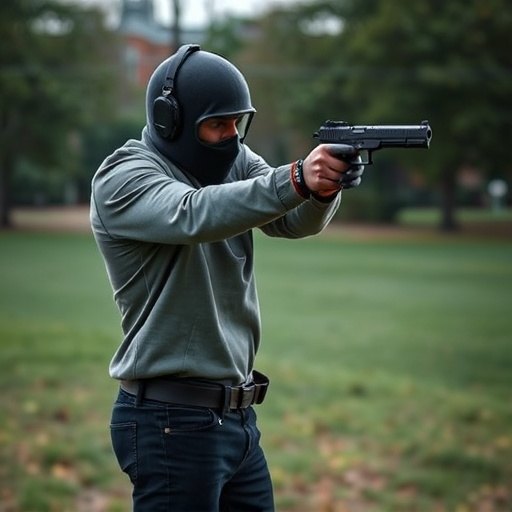Stun Guns: Amperage, Safety & Choice for Beginners
Stun guns with safety features designed for beginners offer a responsible and effective personal def…….
Stun guns with safety features designed for beginners offer a responsible and effective personal defense option, featuring low amperage (50,000-120,000 volts) settings to minimize injury risk. Advanced safety mechanisms like mechanical triggers, auto shut-off, and adjustable voltage ensure controlled use, making them ideal for newcomers to stun gun self-defense. These modern designs prioritize user safety while maintaining powerful deterrence capabilities.
Stun guns, also known as electrical shock weapons, have gained popularity for personal protection. This beginner’s guide delves into the intricacies of stun gun technology, focusing on amperage—the key to their effectiveness. We’ll explore the science behind these devices, including how they work and the safety features that distinguish modern models. Understanding amperage is crucial when choosing a stun gun suitable for beginners, as it impacts performance and ensures safe usage. This article covers everything from basic concepts to advanced considerations for those new to self-defense options like stun guns with safety features.
- Understanding Electrical Shock Weapons: A Beginner's Guide
- The Science Behind Stun Guns and Their Amperage
- Safety Features in Modern Stun Guns
- Amperage: The Key to Effective Stun Gun Performance
- Factors Affecting Stun Gun Amperage
- Choosing the Right Stun Gun for Beginners
Understanding Electrical Shock Weapons: A Beginner's Guide

Electrical shock weapons, commonly known as stun guns, are non-lethal self-defense tools designed to incapacitate a target through an electric current. These devices have gained popularity among individuals seeking personal safety, especially beginners looking for effective yet safe options. Stun guns with safety features cater specifically to this audience, prioritizing user well-being while offering protection.
For beginners considering stun guns, understanding the technology and safety measures is key. These weapons typically use high voltage but low amperage current to deliver a powerful jolt. The amperage, measured in amps, determines the intensity of the shock. Lower amperages (often between 100,000-500,000) are used to stun without causing severe physical harm, ensuring that users can disable an attacker while minimizing the risk of permanent injury. Safety features such as safety switches, automatic shut-off mechanisms, and adjustable voltage settings further emphasize their design focus on user control and responsibility.
The Science Behind Stun Guns and Their Amperage

Stun guns, also known as electronic control devices (ECDs), work by delivering an electric shock to disrupt muscle control in the target’s body. This disruption causes temporary incapacitation, allowing the user and others nearby to escape potential harm. The key factor in determining the effectiveness of a stun gun is its amperage—the amount of electrical current it can deliver.
Stun guns with safety features designed for beginners typically offer lower amperage settings. These weapons are engineered with built-in safeguards, such as automatic shut-off mechanisms and adjustable voltage levels, to prevent accidental or unintended use. Lower amperages (often between 50,000 and 120,000 volts) are sufficient to stun most adults while minimizing the risk of serious injury. Such safety features make stun guns an attractive option for personal protection, especially for those new to using such devices.
Safety Features in Modern Stun Guns

Modern stun guns are designed with several safety features to ensure responsible use, especially by beginners. One key aspect is the inclusion of safety switches or triggers that require a firm press, preventing accidental deployment. This simple mechanism prevents unwanted shocks and allows users to control when the device will activate. Additionally, many models feature adjustable output settings, allowing users to select the appropriate amperage level for different scenarios and ensure safe use without causing unnecessary harm.
Another important safety feature is the stun gun’s low voltage and high amperage design. While a higher voltage might be tempting for more power, it can also lead to severe injuries if not used correctly. Modern stun guns typically operate on lower voltages, delivering a powerful electric shock within a safe range, making them effective deterrents without causing permanent damage or serious health issues.
Amperage: The Key to Effective Stun Gun Performance

Amperage is a critical factor in determining the performance and effectiveness of stun guns, especially for those new to using such devices. Stun guns with safety features designed for beginners often emphasize controlled amperage levels to ensure the device delivers a powerful shock while minimizing risks to users and bystanders. The amperage, measured in amps, represents the flow of electric current through the body when the stun gun is activated. A higher amperage typically results in a more intense stun effect, causing the target to experience muscle spasms and temporary incapacitation.
For beginners, it’s essential to understand that while higher amperages can be more effective against larger or more resistant individuals, they also increase the likelihood of unintended harm if not used correctly. Stun guns with safety features often incorporate circuits and settings that regulate amperage, ensuring a balanced approach to stun performance. These devices are designed to deliver enough current to subdue an assailant while keeping the risk of severe injury or permanent damage to a minimum, making them safer options for those new to using electrical shock weapons.
Factors Affecting Stun Gun Amperage

Stun guns, or electroshock weapons, deliver a powerful electric current to temporarily incapacitate a target, and their effectiveness is measured in amperage. Several factors influence the amperage a stun gun produces, which ultimately determines its power and impact. One of the key considerations is the device’s voltage; higher voltage generally results in greater amperage, leading to a more intense shock. However, it’s crucial to balance this with safety features, especially for beginners using stun guns for self-defense.
The type of battery used plays a significant role as well. Rechargeable lithium-ion batteries, common in modern stun guns, offer variable voltage and amperage settings, allowing users to adjust the device’s output according to their needs and comfort levels. Additionally, the design and construction of the stun gun can affect its performance; well-designed models with optimal electrical conductivity ensure efficient current transfer, maximizing both the amperage and the effectiveness of the shock.
Choosing the Right Stun Gun for Beginners

When considering a stun gun for the first time, prioritizing safety should be the top priority. Beginners should look for models equipped with advanced safety mechanisms to ensure responsible use and minimize accidental discharge. Features like mechanical triggers, automatic shut-off functions, and adjustable voltage settings are essential for user control and prevention of excessive force.
Opting for stun guns with safety features designed specifically for beginners can provide peace of mind. These devices often come with clear instructions, durable construction, and user-friendly designs, making them ideal for individuals new to personal defense tools. Additionally, training modes or simulated settings can help users familiarize themselves with the device without causing harm, fostering confidence in its proper deployment.
Electrical shock weapons, particularly stun guns, have evolved into powerful tools for self-defense. Understanding amperage, the key performance indicator, is crucial when choosing a stun gun. With modern safety features designed to prevent accidental discharges, beginners can now access effective protection without compromising their well-being. When selecting a stun gun, look for models that combine high amperage with robust safety mechanisms, ensuring you’re prepared for unexpected situations while maintaining peace of mind.


